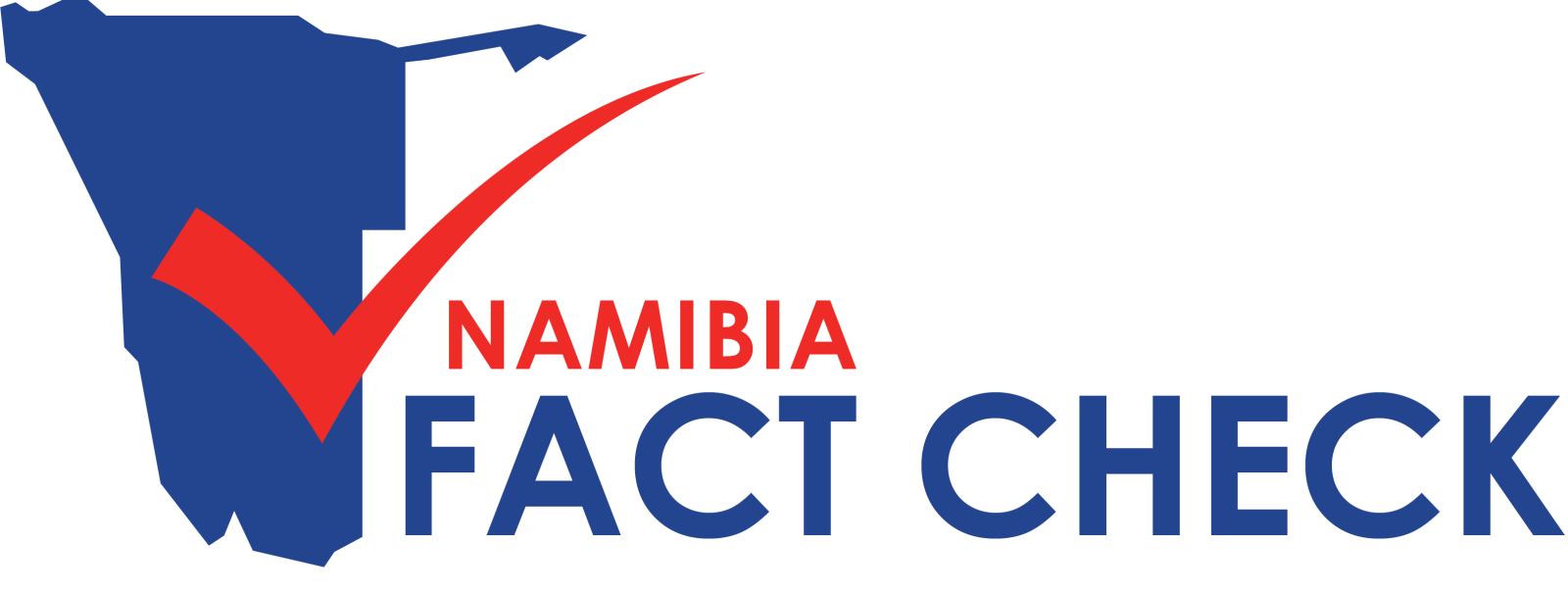IMAGE: Namibia Fact Check
With elections just over six months away most political parties hardly have a presence on social media to capitalise on
Increasingly people everywhere are turning to social media for news and information.
Namibians too are following this global trend. For, according to Round 9 of the Afrobarometer survey, over 55% of Namibian respondents indicated that they mostly or regularly get their news and information via social media.
However, while a large proportion of Namibians appear to be getting their news and information primarily via social media, political parties seem not to be convinced of the usefulness of these platforms to reach and communicate with their supporters or potential supporters, judging by the state of their social media pages and profiles.
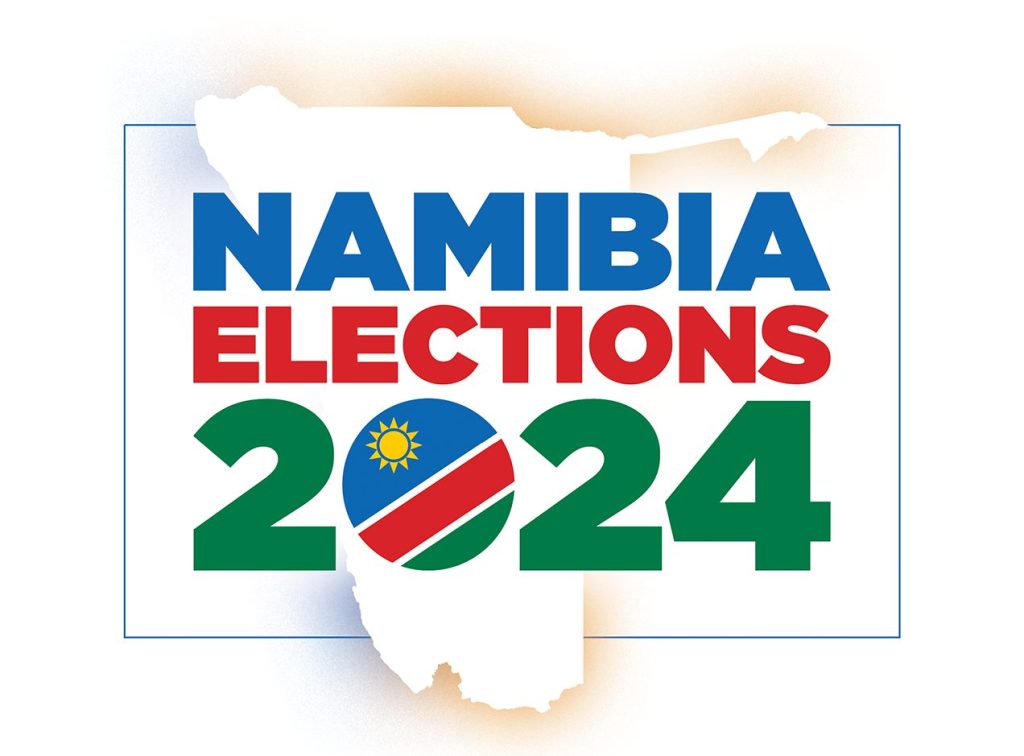
Among the social media platforms, Facebook remains a popular choice in Namibia, so the state and status of the Facebook pages of the selected major political parties is used in this assessment as a proxy for what their pages and profiles on other platforms look like.
Swapo Party
The ruling party, aside from not having a functioning website, also seems to have abandoned an official Facebook page.
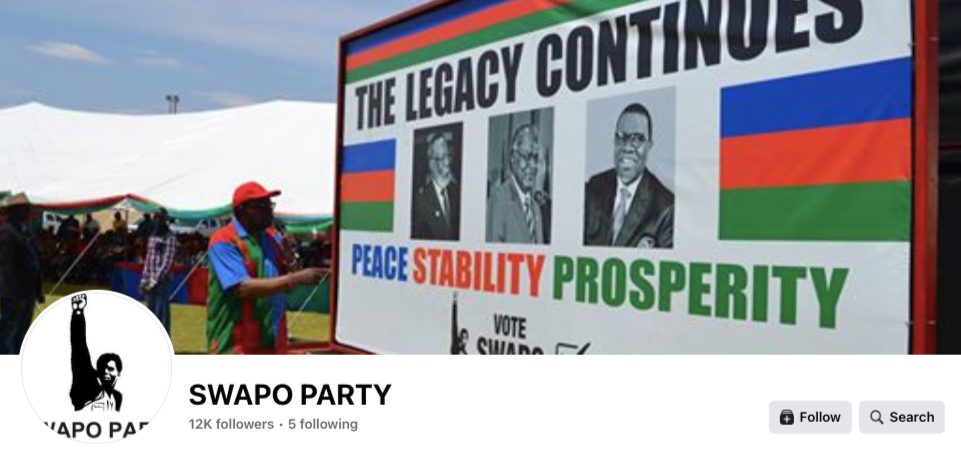
What looks to have been an official ruling party Facebook page has only attracted about 12,000 followers to date, while the last post published is dated 3 September 2019, indicating that whoever managed the page stopped posting even well before the November 2019 presidential and parliamentary elections.
The official page status appears to have shifted to a “fan page” titled Swapo Party of Namibia with over 34,000 followers. This page is up to date with ruling party election campaign related posts and information, right up to 15 May 2024, the date of publication of this article.
The fact that the former official page only managed to attract around 12,000 followers and the “fan page” has only attracted about 34,000 followers to date, and compared to what the other parties have managed, is rather interesting given how dominant the party is and has been in Namibian politics over the years. The surprisingly low number of followers is also evident on other social media platforms. For instance, on X (formerly Twitter), the Swapo Party has only attracted about 2,700 followers since joining the platform in September 2019.
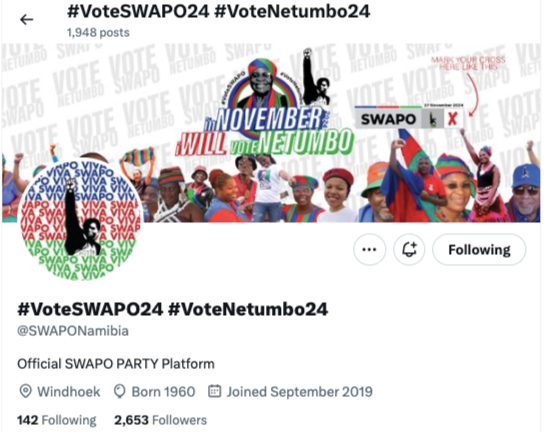
Similarly interesting, while accounts of some political party leaders (see McHenry Venaani below) or those dedicated to them have attracted large followings and even far outstripped the follower numbers of their parties, the opposite is true of the ruling party leadership. For instance, a Facebook account dedicated to the Swapo Party candidate for the Namibian presidency, Netumbo Nandi-Ndaitwah, has so far only managed to attract about 21,000 followers, while on X (Twitter) none of the accounts dedicated to her have managed to crack 10,000 followers.
Popular Democratic Movement (PDM)
Similar to the ruling party, the official opposition party, the Popular Democratic Movement (PDM) of Namibia, also does not have a functioning website and appears unable to attract a large following across various social media platforms.
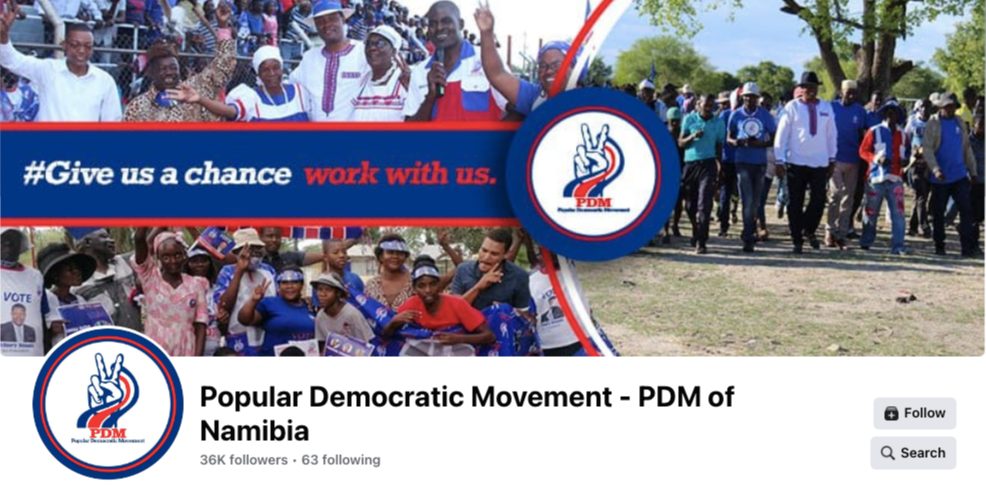
While the party has more followers on its Facebook account than either of the two ruling party accounts discussed earlier, it still seems rather low for what should be a popular page on social media, given the party’s standing.
The PDM’s X (Twitter) account was created in February 2022, but still only has 138 followers.

Worth noting is that despite the party’s general low follower numbers, leader McHenry Venaani has quite a large following on X (Twitter), with almost 100,000 followers on the platform. Venaani also has about 24,000 followers on Facebook.
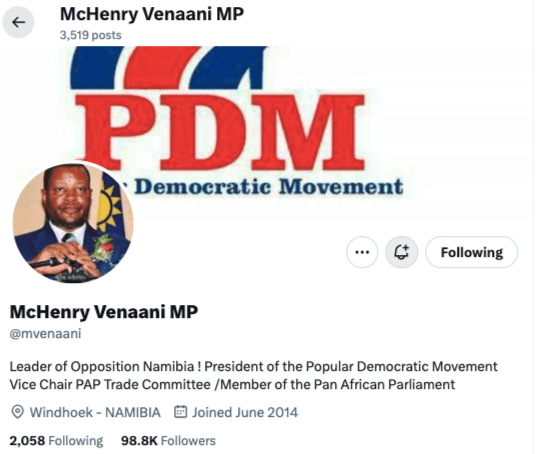
Landless People’s Movement (LPM)
Among the major political parties, the Landless People’s Movement (LPM) has the largest following on Facebook, and a functioning website to boot.
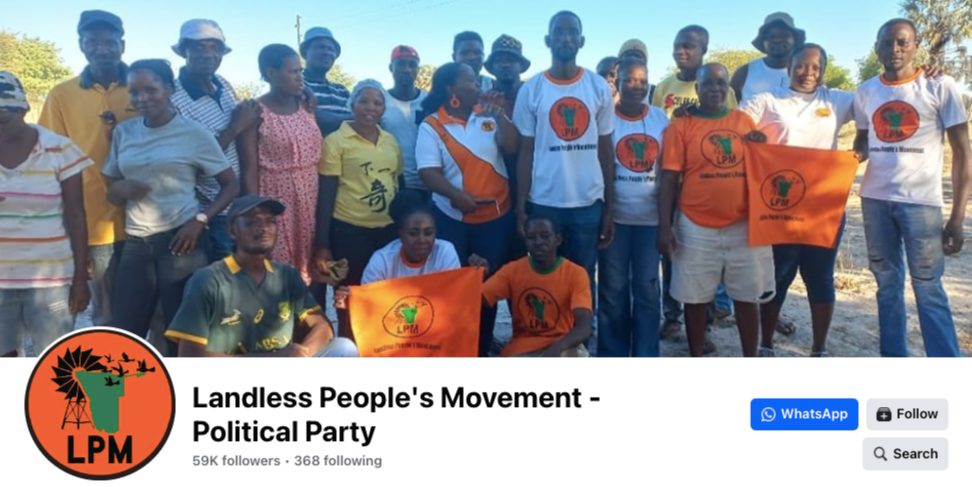
The party has almost 60,000 followers on the platform and had election related posts dated 15 May 2024 up as this article was being finalised.
Independent Patriots for Change (IPC)
The party on the march also has a functional and up-to-date website alongside a decent following on Facebook.
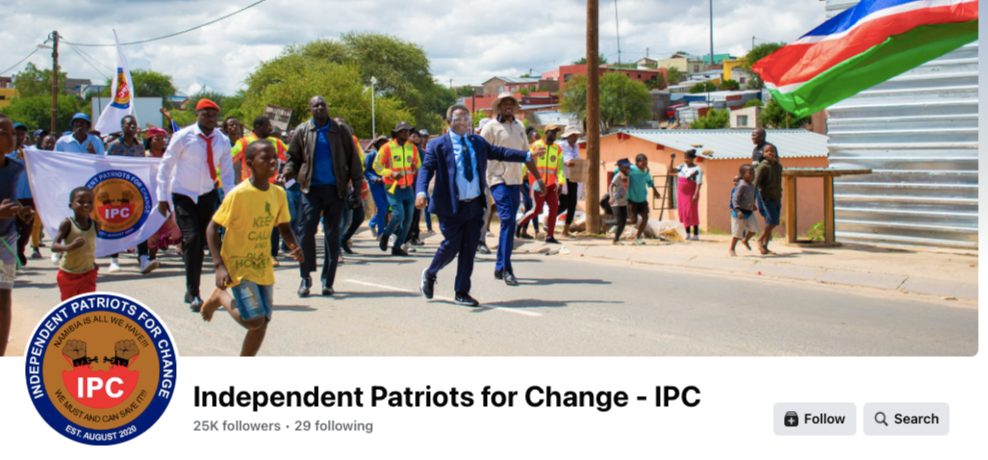
The IPC has about 25,000 followers on Facebook and was posting election related content through 15 May 2024.
However, aside from the Facebook followers, not even the party leader, Panduleni Itula, seems able to inspire the party to attract much following on other platforms. For instance, while the IPC does not appear to have an official X (Twitter) account, an account in Itula’s name appears to serve as the party’s account, but has only managed to attract 721 followers by 15 May 2024.
It should be noted though that there are at least two other X (Twitter) accounts bearing the Panduleni Itula name, with both created in October 2019. Both have more followers than the latest active account, with one having 4,828 followers and the other 8,590 followers.
Other parties
Some of the smaller parties in the Namibian parliament also have social media accounts, but no websites, and even though they have been active on various platforms for years they have failed to attract sizeable followings.
The United Democratic Front (UDF) has only managed to attract about 4,700 followers on Facebook, to an account which has not seen new posts published since September 2019.
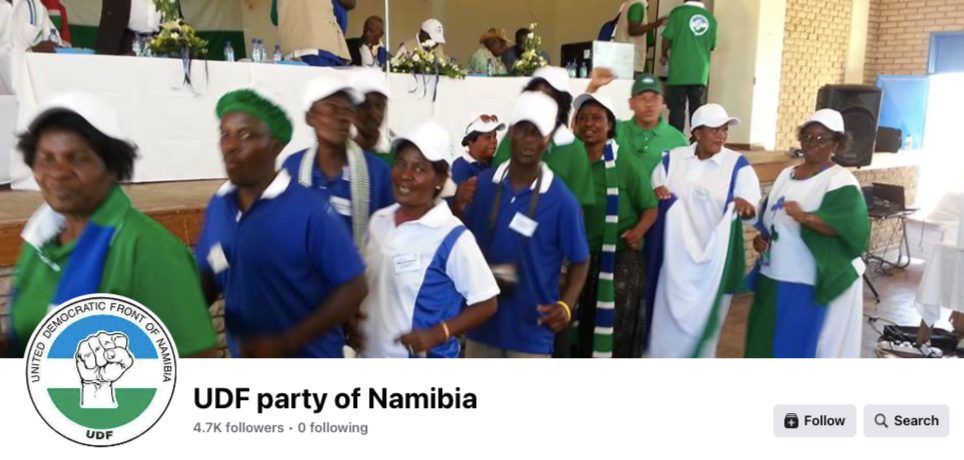
The National Unity Democratic Organisation (NUDO) only has 668 followers on Facebook, even though the account has been actively posting to its feed until recently.
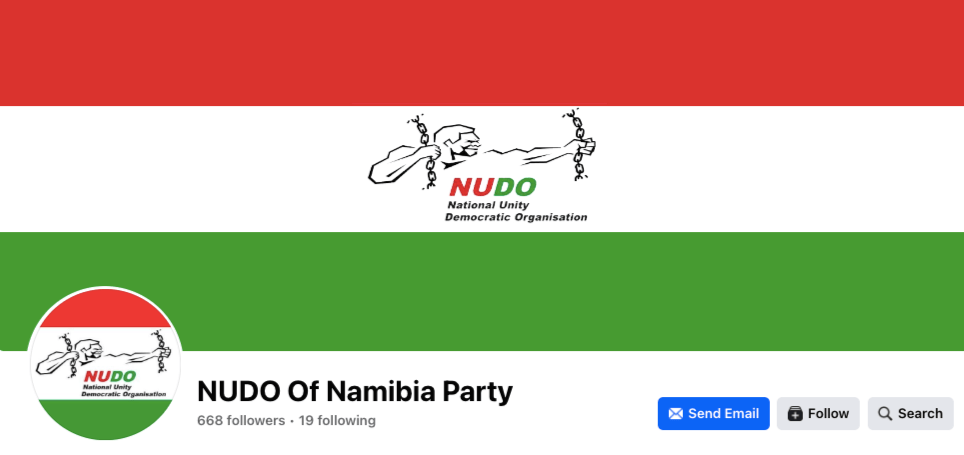
The Namibia Economic Freedom Fighters (NEFF) only has about 2,800 followers on Facebook, and the account last posted in April 2022.

While this article primarily looked at the following of political parties on Facebook, for the most part the relatively low followings are also seen on other platforms, such as X (Twitter), Instagram and Youtube, as well as TikTok. Why this is, remains an interesting question. However, it is worth noting that most of the parties have not helped themselves by regularly posting interesting and engaging content, which could drive growth among their followers and actual supporters, especially from among young voters.
